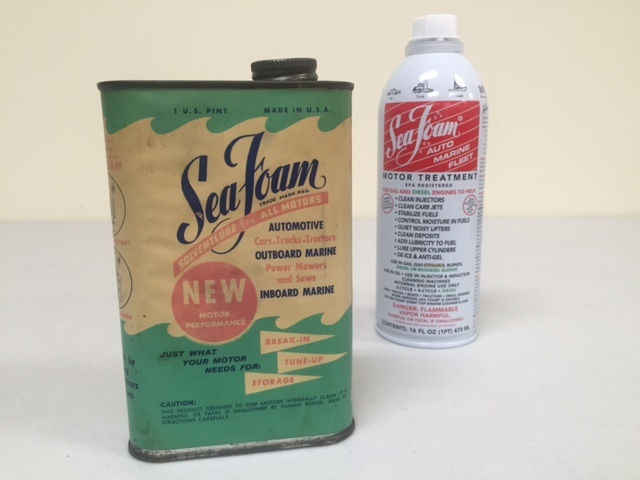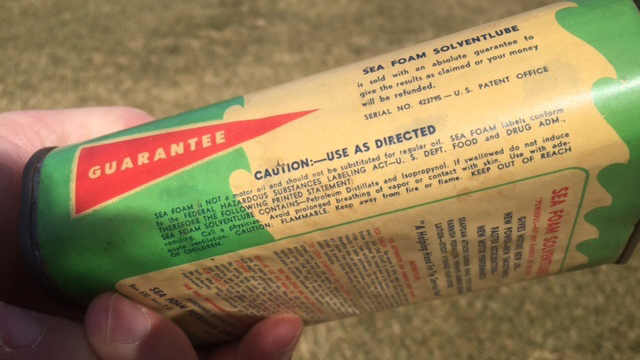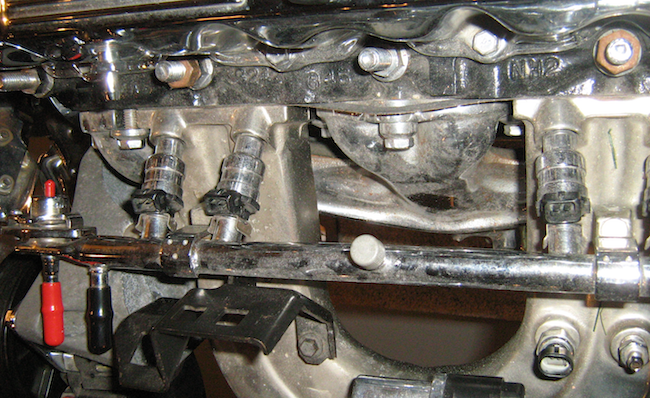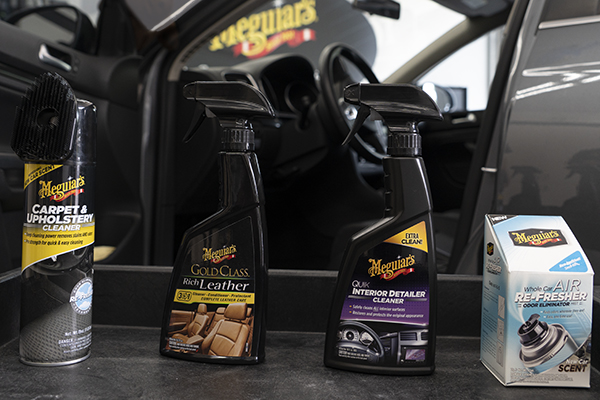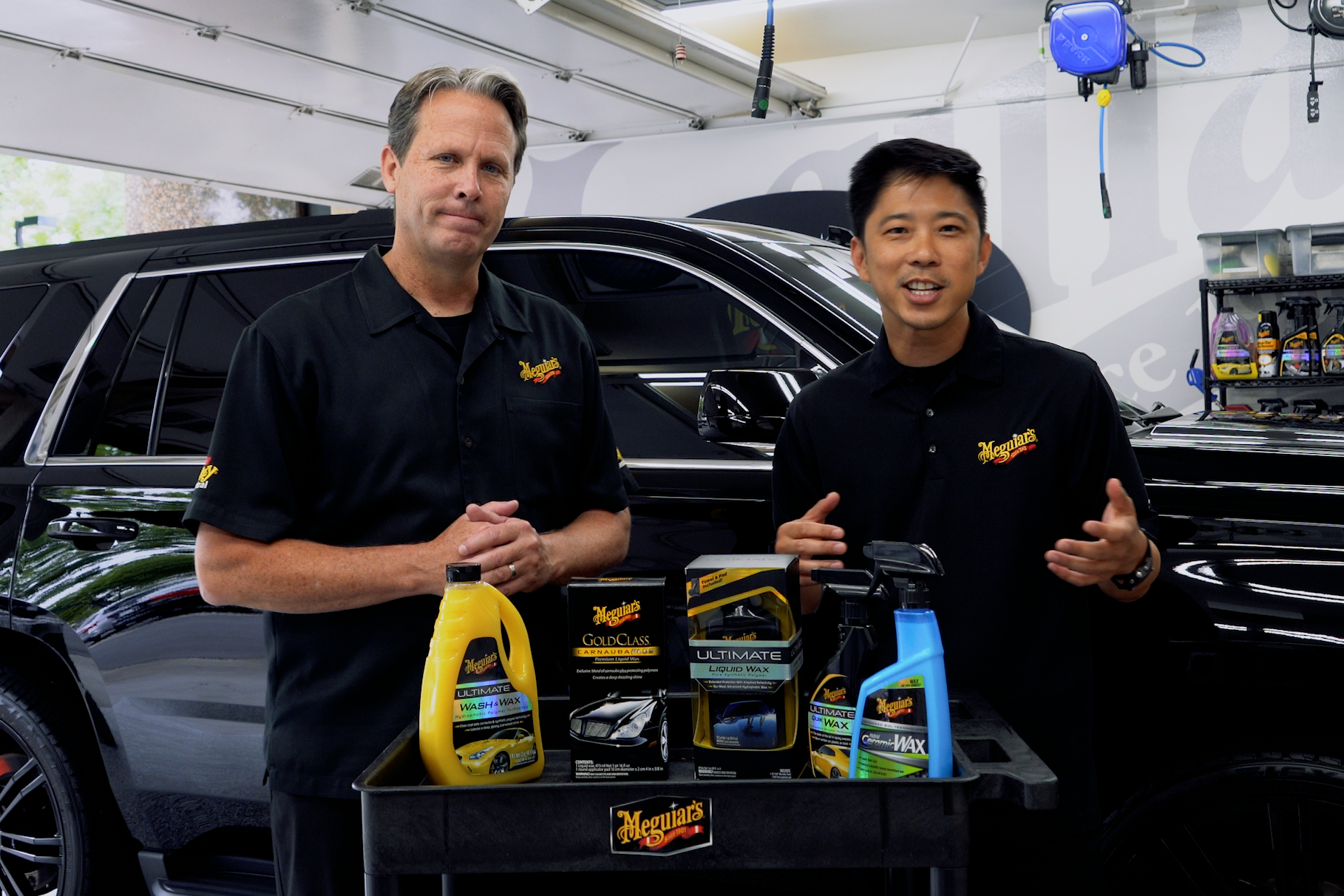It’s a beautiful spring day, so you decide to drive to a car show and take pictures of the new vehicles on display. You carefully fold up your map of the area and put it into your glove box. You make sure that you have extra rolls of 35mm film, you do some quick maintenance on your car and you plan to return home in time to get your film to the drug store that develops your photos...
Quick question: did this scenario take place in 2015? Why or why not? The answer to part one is: highly unlikely. This paragraph is chock full of products and scenarios that, if not obsolete, are definitely headed that way–which makes the story of Sea Foam all the more amazing. “This product was invented in the 1930s,” says Sea Foam’s marketing director, Brian Miller, “and trademarked in 1942. Sea Foam was invented in a time when engines were much less sophisticated than they are today, with fuel that was quite different from today’s options. And yet, the same Sea Foam that improved the quality of fuel then still works every bit as well today.”
Glimpse back into the 1930s
Fred Fandrei enjoyed fishing, but he frequently experienced problems with his outboard motor. He diagnosed it as gummy varnish created by the gas and oil needed to power his engine. Says Miller, “The thought of spending more time fishing than working on the motor prompted Fred, who was a District Manager for the Sinclair Refining Company at that time and had a good knowledge of fuel, to invent a product that would stop the gas/oil mixture from becoming stale.”
Fred stored his product in beer bottles and quart jars and sold it to other fishermen. When one of them asked him for some of his “Sea Foam” stuff, Fred liked the name and began using it for his concoction. He advertised in Field and Stream and Outdoor Life for a while but the market demand soon started shifting from marine to automotive.
Some of the latest and greatest innovations in the car world during that era include:
- Low-pressure balloon tires, replacing those hard tires of the past
- Windshield wipers
- Synchromesh transmissions for smoother shifting
- Automatic chokes
- Built-in trunks
- Hydraulic brakes and gear shifts on steering columns
Most cars now boasted both radios and heaters, and still featured foot boards and sunshades on the car’s windscreens. Radiator grilles tilted back slightly and were often made of flashy-looking chrome. Henry Ford also invented the one-piece V-8 engine for the common man. Here’s more about the cars of 1930s.
Wonders of Sea Foam
So what has made Sea Foam so constantly popular through more than seventy years of change? All carbon-based fuels and engine oils leave behind petroleum-based residue. Over time, these naturally build up and eventually prevent lifters and rings from working as they should, and this residue also affects injectors, pistons and intake valves.
For optimum engine performance, car owners need to periodically do a clean-up job. Sea Foam accomplishes this task using a petroleum-blended product. Now, this can seem counter-intuitive. Why on earth would you use petroleum to clean up the residue from petroleum? Miller offers a clear and concise explanation. “If you’ve ever gotten oil-based paint on your hands,” he says, “you know that using water to clean yourself up only makes matters worse. Instead, you use something oil based to remove the paint. The same is true when you want to clean your engine. The petroleum solvency cleans your fuel system and removes gummy substances that hinder performance. And it's harmless to your engine.”
As the company website describes the process: “Sea Foam helps slowly and safely re-liquefy this varnish so contaminants and deposits can be safely cleaned out of the systems as the engine is operated.” Other additives on the market are either detergent based or use a combination of detergent and petroleum, Miller says, although he is quick to add that he has respect for competing additive brands. “We don’t tear them down to make ourselves look good,” he says. “Instead, we talk about how quickly and consistently Sea Foam solves problems.”
Sea Foam can also help, according to the company website, with lack of lubrication and with absorption of moisture from the atmosphere and condensation. And, here’s an overall message about the product from the company: “Sea Foam can be used by professionals and do-it-yourselfers alike to help safely eliminate many contamination and lubrication related performance problems and help prolong the life of an engine. A clean, dry and well lubricated engine will run smoother and more efficiently.”
How to use Sea Foam
What people say about Sea Foam
Marketing directors usually share a remarkable story or two about someone who has had incredible success in using their product. Miller, though, is an exception to the rule, providing no stories of nuclear-level success. He instead emphasizes how quickly and consistently the product has worked for a wide range of challenges over several decades, and how the product continues to do that, even as engines and fuels evolve and become more sophisticated.
“Stories from satisfied customers are so common,” Miller says, “that no one story stands out. Whether someone needs to deal with engine hesitation, poor idling or rough performance, and whether that person wants better performance out of a pickup truck, a sports car, or even a chain saw, their problems are quickly resolved.”
If he were to wear a Sea Foam t-shirt into a grocery store, he says, people would walk up to him to share their stories. “It’s fun to meet people who are excited about their experiences,” he adds, “and as long as we use carbon-based fuels, there will be degradation of that fuel, and we’ll still be relevant. We’ll still be around to help.”
Have a Sea Foam story to share? Leave us a comment.
